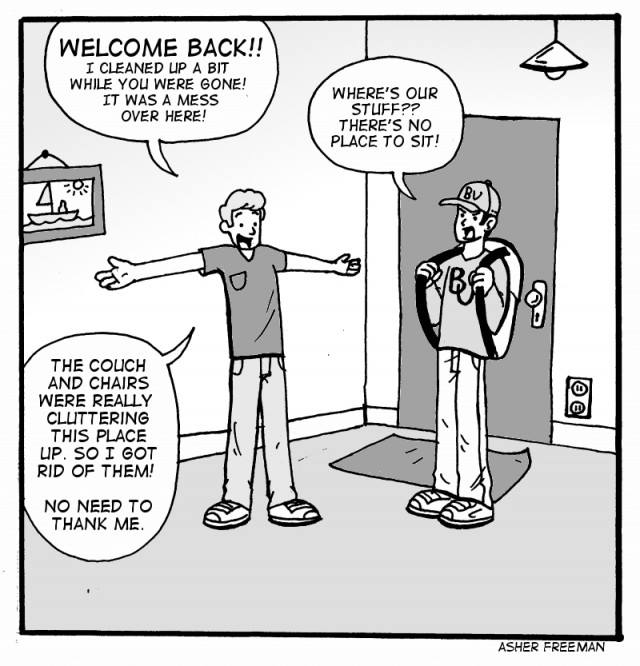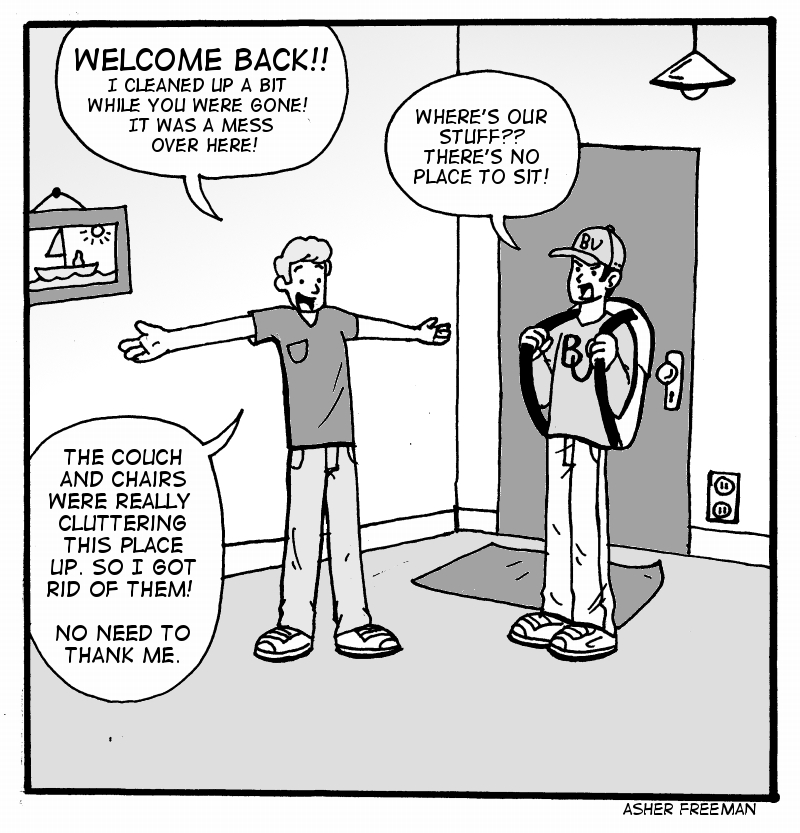 Students coming back to Baylor for the 2013-2014 school year arrived to several unexpected and non-communicated changes. We applaud progress at Baylor, but some of the changes that surprised students do not appear to be progress.
Students coming back to Baylor for the 2013-2014 school year arrived to several unexpected and non-communicated changes. We applaud progress at Baylor, but some of the changes that surprised students do not appear to be progress.
There are two specific surprises to which we are referring. The first surprise is along Speight Avenue where the road suddenly ends with no signs warning of a traffic pattern change. Baylor Media Communications confirmed that students received no emails from their office about road closures and parking changes.
The other unexpected change was the sudden loss of 200 student parking spaces on campus. With half of those spaces going to faculty and staff parking and the other half going to green space and future construction sites, that is a significant number of lost parking spaces students have historically relied on to attend classes at Baylor.
Green space is important to provide an aesthetically appealing campus. We do not want our campus to become a concrete jungle, but Baylor is also not a park (although having a “Baylor Park” just off campus would be a cool addition).
Ever since 2002 and the Baylor 2012 Imperative VIII, “Construct useful and aesthetically pleasing physical spaces,” Baylor has gone on a green space creation frenzy which quite frankly has surpassed the point of being ridiculous. Most recently created green space would have been better used to provide stores, shops and restaurants to make Baylor a residential-friendly campus. Instead, it is wasted land.
Furthermore, counting the parking spots located in the Ferrell Center parking lot as part of the number of student parking spots on campus falsely inflates the accurate number of student parking on campus.
We recognize that students are not guaranteed a student parking spot on campus when they purchase a parking permit. Surprisingly, there is also insufficient faculty and staff parking on campus compared to the total number of full-time faculty and staff.
However, we believe that there are several things that Baylor could have done to better prepare students for these changes and also to make things more equitable and fair to the students that are paying thousands of dollars a year to attend Baylor University.
First, Baylor needs to do a better job adequately communicating traffic pattern changes on and around campus that will affect students traversing campus. Posting information on a website alone is not sufficient to communicate the information. The Baylor Lariat is one avenue to communicate the information to the student body. Other methods that should be employed include social media and email.
Second, it is common for universities across the country to prohibit first-year students from parking on campus. Baylor should also construct an off-campus parking garage (with shuttle service) where upperclassmen living on campus must park their vehicles after they have moved into on-campus housing. This coupled policy at Baylor would open up a significant amount of on-campus parking for students and allows the on-campus student parking spots to be available to the numerous students that live off campus and commute.
Third, we encourage committees to always seek out the general opinion of the student body before making decisions that directly impact students on a daily basis. Statements that are made indicating that changes are done with the students’ best interest in mind do little to reassure students that their voice and input is sought out and actually considered. We feel statements like that are actually demeaning and condescending to students and do not build a community of trust and goodwill between students and Baylor.
Without students, Baylor would cease to exist, professors and staff would be without a job and researchers would have no place to perform their research. This seems to be a point that does not always seem to be recognized, understood or even considered when some decisions are made.
We do applaud the university for considering safety as part of their decision-making process in terms of closing down part of Speight Avenue.
Safety needs to be coupled with common sense, and we feel our suggestions accomplish this.






